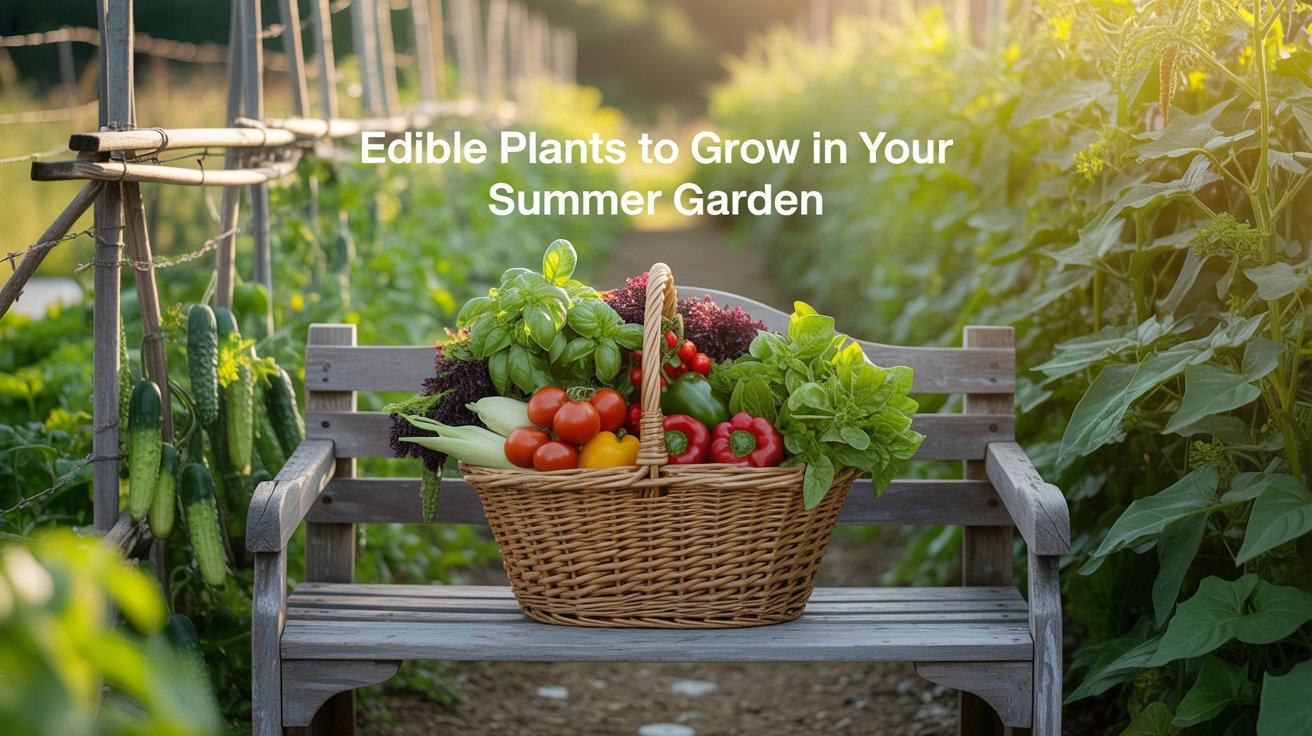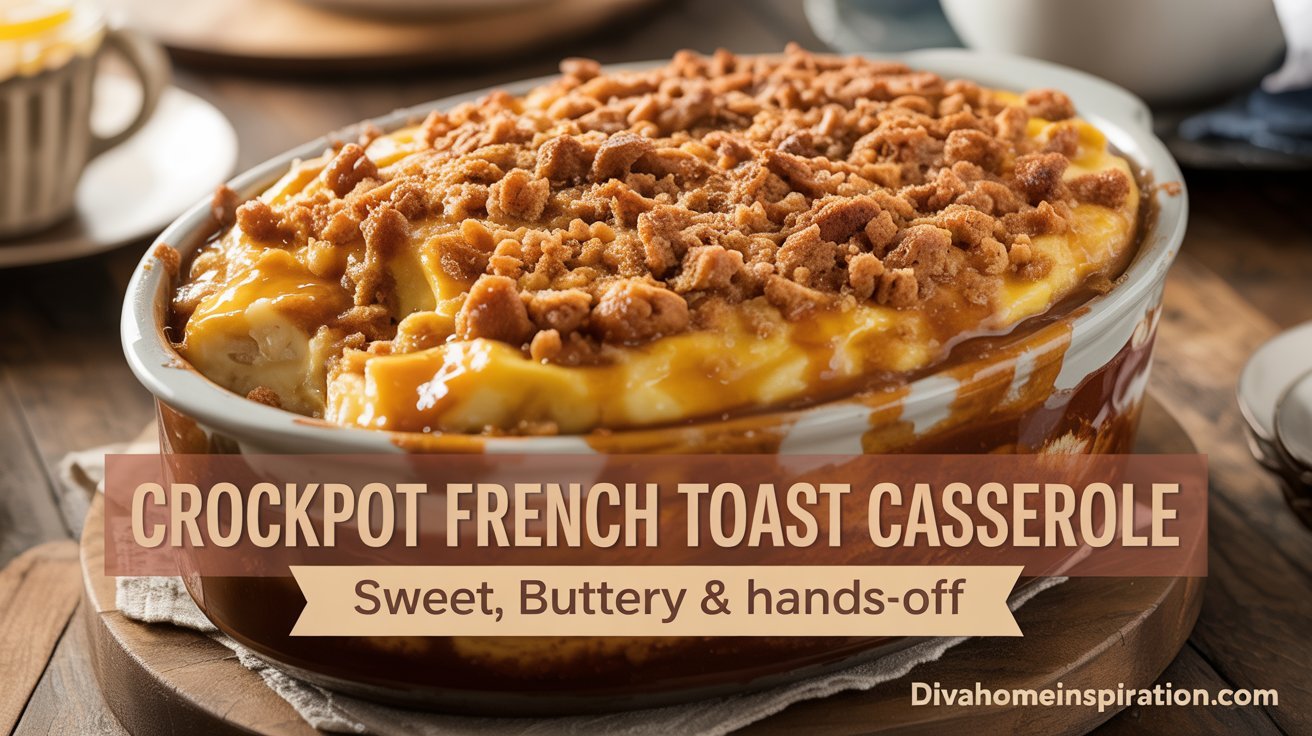This article may contain affiliate links. If you click on these links and make a purchase, we may receive a small commission at no extra cost to you. This helps support our website and allows us to continue to produce content like this. Thank you for your support!
Summer is the perfect season to cultivate a vibrant and productive garden filled with edible delights. Whether you’re a seasoned gardener or a beginner, these ten edible plants are easy to grow and will add fresh flavors to your summer meals.
1. Tomatoes
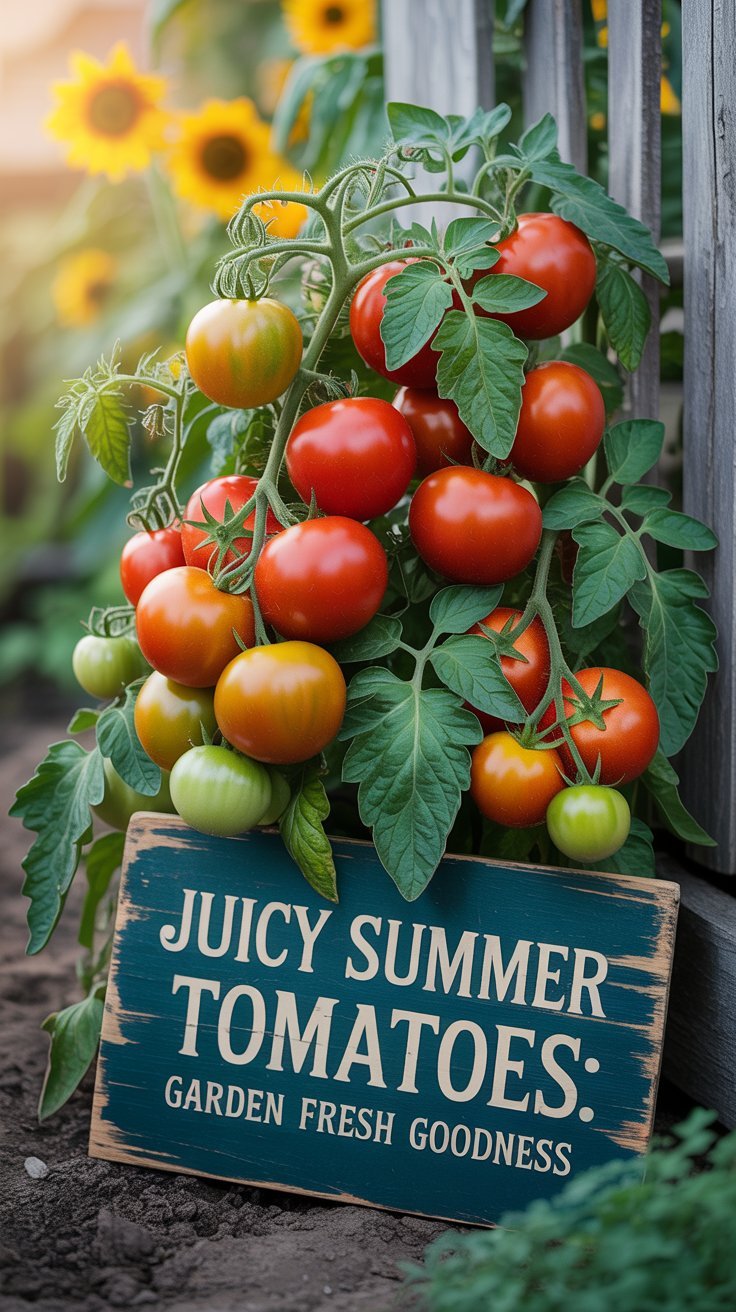
Tomatoes are a quintessential summer crop, thriving in warm temperatures and abundant sunlight. They come in various sizes and flavors, from sweet cherry tomatoes to hearty beefsteaks, making them versatile for salads, sauces, and grilling.
To grow tomatoes successfully, plant them in well-drained soil with plenty of organic matter. Ensure they receive at least 6-8 hours of direct sunlight daily. Regular watering and staking or caging will support healthy growth and fruit production.
Harvest tomatoes when they’re fully colored and slightly soft to the touch. Freshly picked tomatoes offer unparalleled taste and are a rewarding addition to any summer garden.
2. Basil

Basil is a fragrant herb that pairs wonderfully with many summer dishes, especially those featuring tomatoes. Its lush green leaves add a burst of flavor to salads, pastas, and homemade pesto.
Plant basil in a sunny spot with well-drained soil. Regular pinching of the top leaves encourages bushier growth and prevents flowering, which can make the leaves bitter. Water consistently, keeping the soil moist but not waterlogged.
Harvest basil leaves as needed, starting from the top to promote continuous growth. Fresh basil not only enhances your culinary creations but also adds a delightful aroma to your garden.
3. Cucumbers
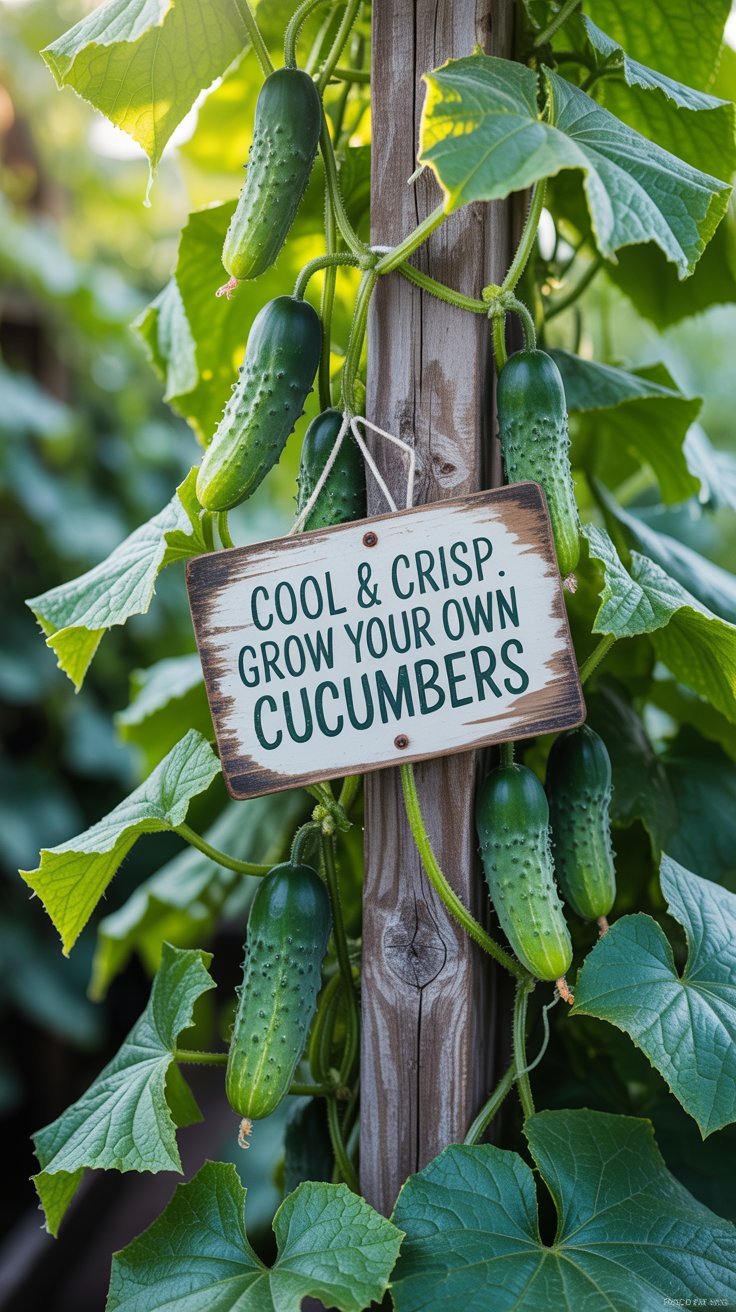
Cucumbers are refreshing and hydrating, making them a summer favorite. They grow quickly and can be enjoyed fresh, pickled, or added to various dishes for a crisp texture.
Sow cucumber seeds in fertile, well-drained soil with plenty of sunlight. Provide a trellis or support for vining varieties to save space and promote air circulation, reducing the risk of disease. Keep the soil consistently moist for optimal growth.
Harvest cucumbers when they’re firm and reach the desired size, typically 50-70 days after planting. Regular picking encourages the plant to produce more fruit throughout the season.
4. Strawberries
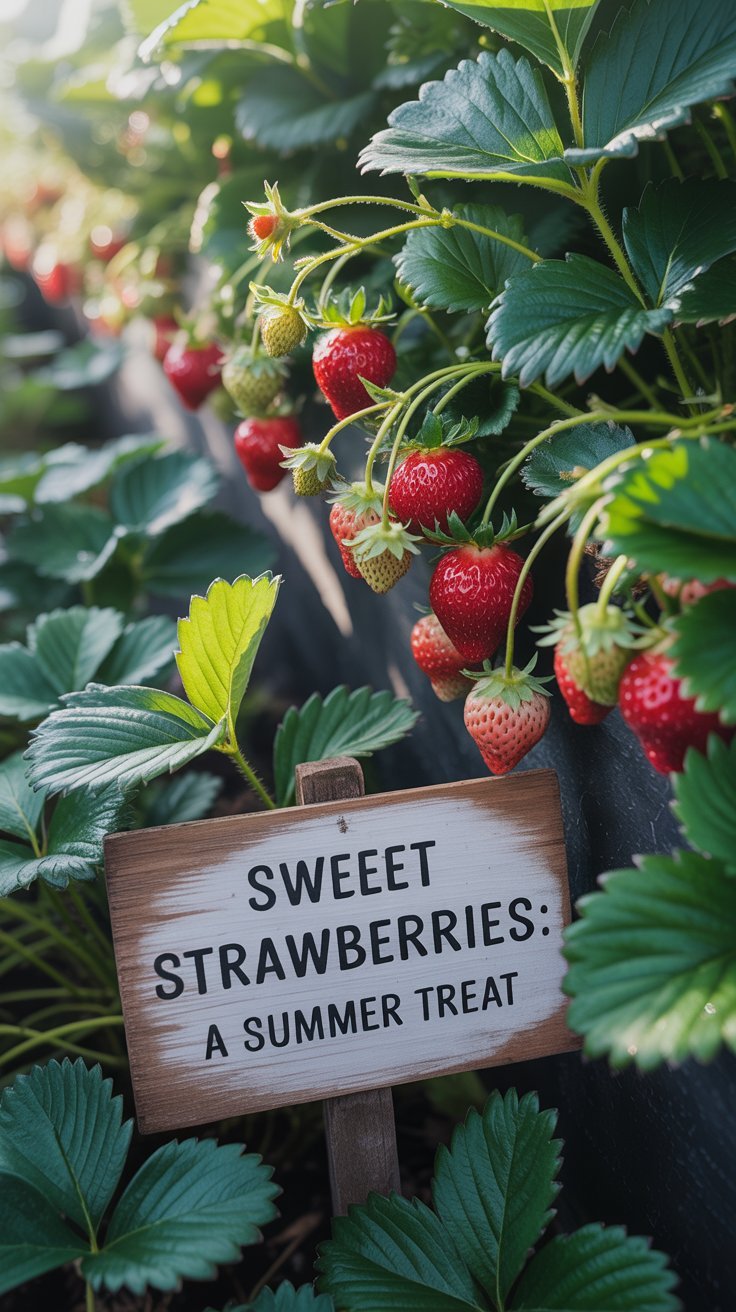
Strawberries are a sweet treat that can be grown in garden beds, containers, or hanging baskets. Their bright red berries are not only delicious but also rich in vitamins and antioxidants.
Plant strawberries in well-drained soil with full sun exposure. Mulching helps retain moisture and keeps the fruit clean. Regular watering and removing runners will focus the plant’s energy on producing fruit.
Pick strawberries when they’re fully red and ripe. Freshly harvested strawberries are perfect for snacking, desserts, or adding to salads for a burst of sweetness.
5. Bell Peppers
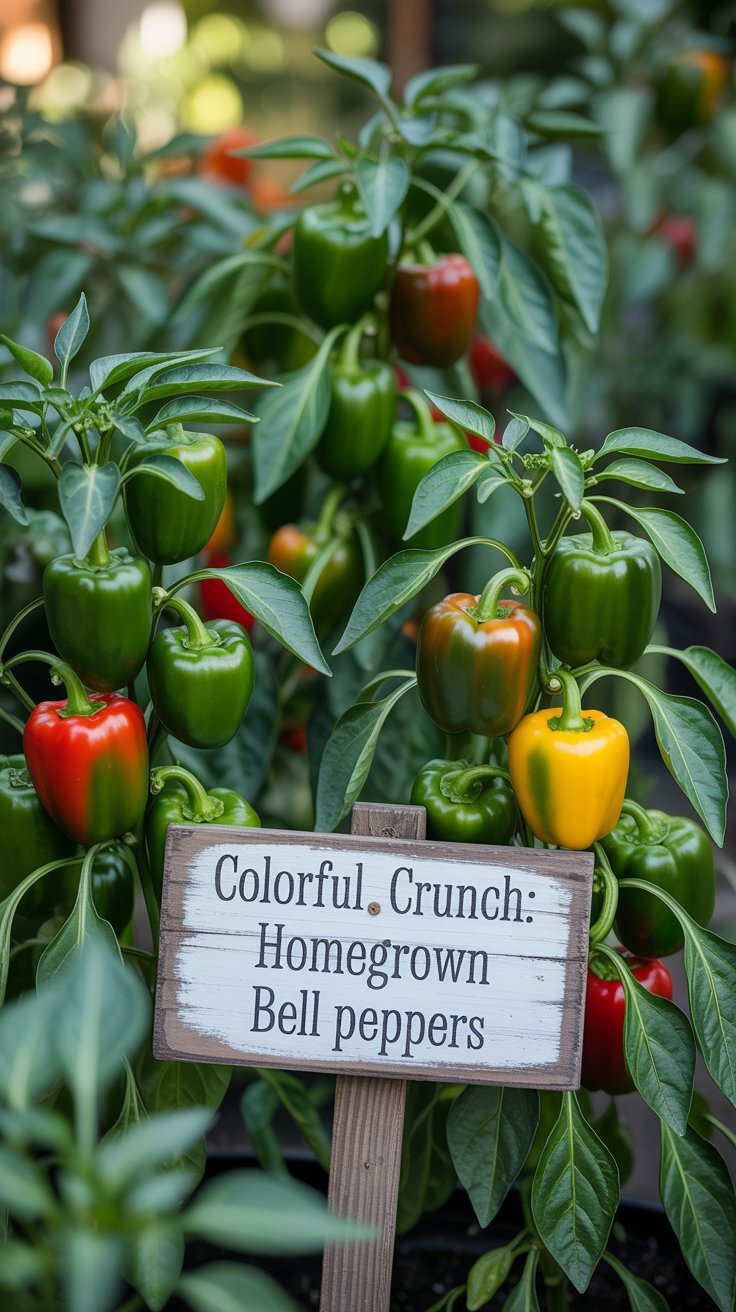
Bell peppers add color and crunch to a variety of dishes. They come in green, red, yellow, and orange varieties, each with its unique flavor profile.
Grow bell peppers in a sunny location with well-drained, fertile soil. They require consistent watering and benefit from staking to support the weight of the fruit. Applying mulch can help retain soil moisture and suppress weeds.
Harvest bell peppers when they reach the desired color and size. They can be eaten raw, roasted, or sautéed, making them a versatile addition to your summer harvest.
6. Swiss Chard
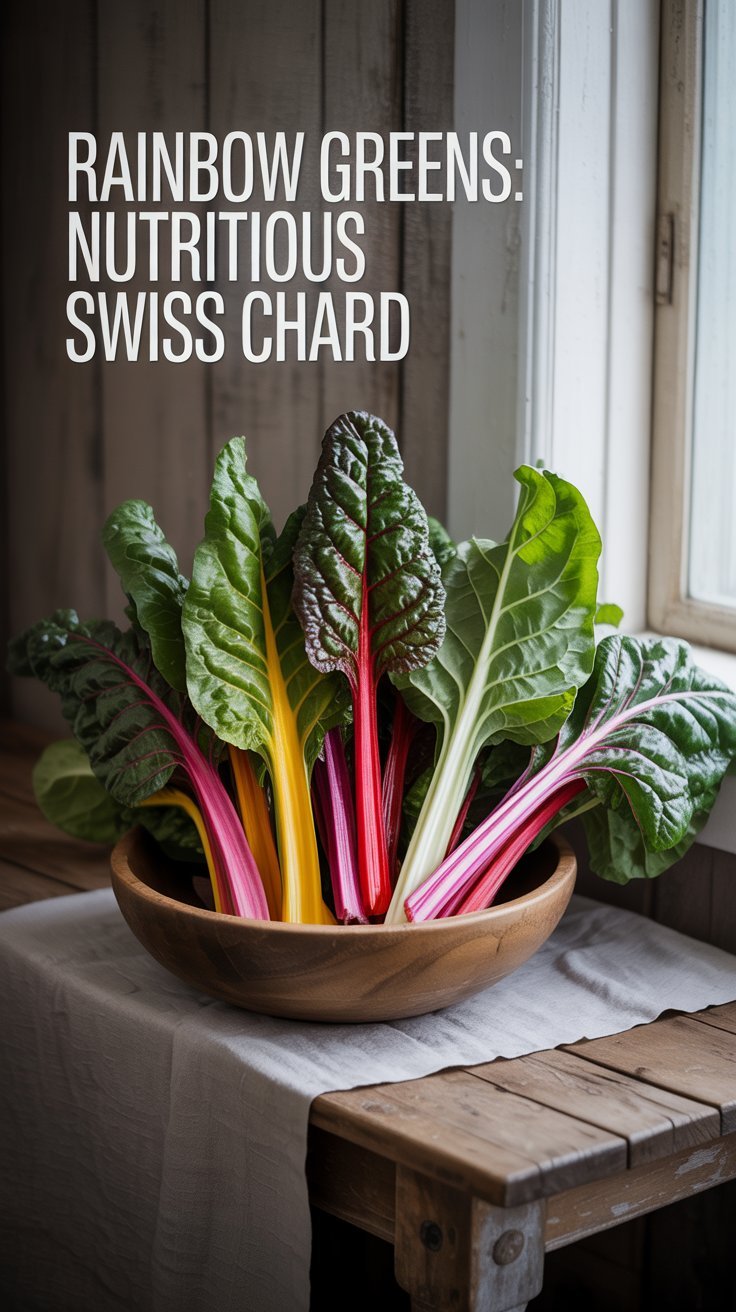
Swiss chard is a nutritious leafy green that thrives in summer heat. Its vibrant stems and tender leaves make it both ornamental and edible, suitable for salads, sautés, and soups.
Plant Swiss chard in well-drained soil with full sun to partial shade. Regular harvesting of outer leaves encourages continuous growth. Keep the soil consistently moist to promote tender leaves.
Swiss chard is a cut-and-come-again crop, providing a steady supply of greens throughout the season. Its resilience and productivity make it a valuable addition to any summer garden.
7. Carrots
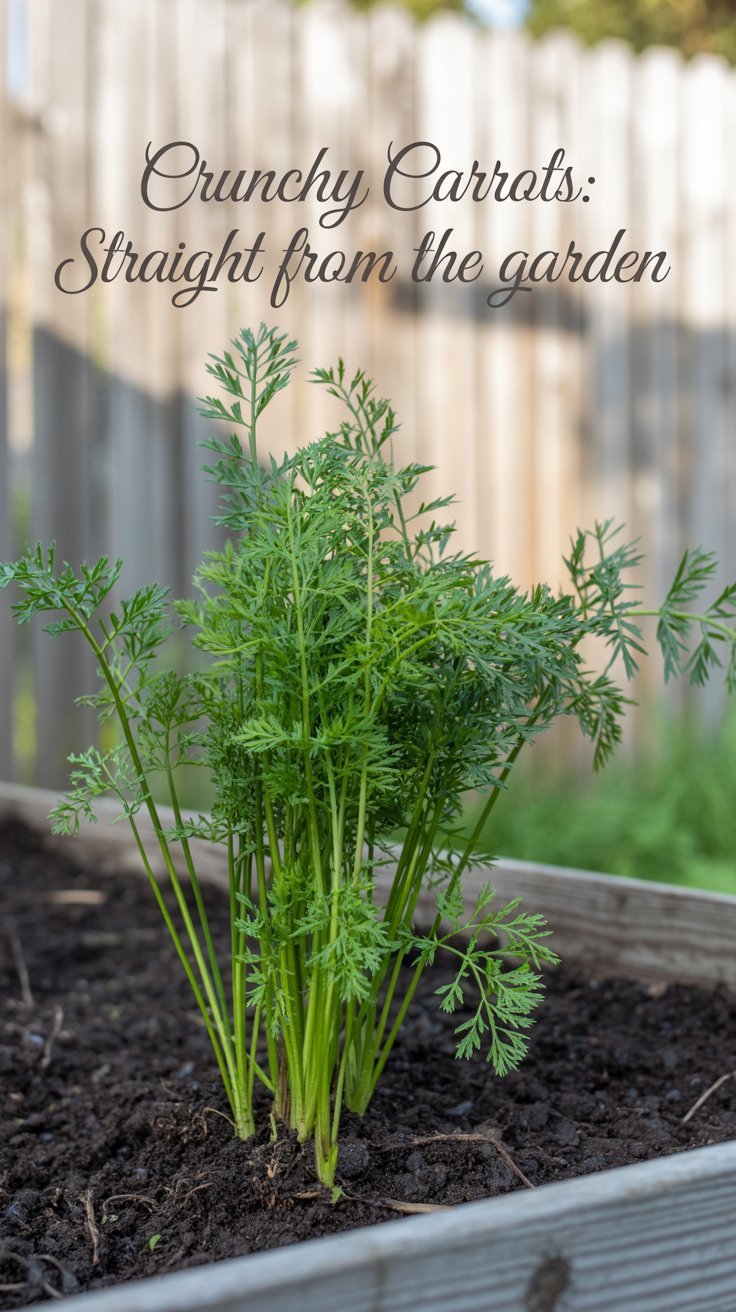
Carrots are a root vegetable that can be grown in various soil types, provided it’s loose and free of stones. They come in different colors and sizes, adding variety to your meals.
Sow carrot seeds directly into the soil, spacing them appropriately to allow room for root development. Keep the soil moist during germination and thin seedlings as needed.
Harvest carrots when they reach the desired size, typically 60-80 days after planting. Freshly pulled carrots offer a sweet, crisp taste that’s unmatched by store-bought varieties.
8. Sweet Corn
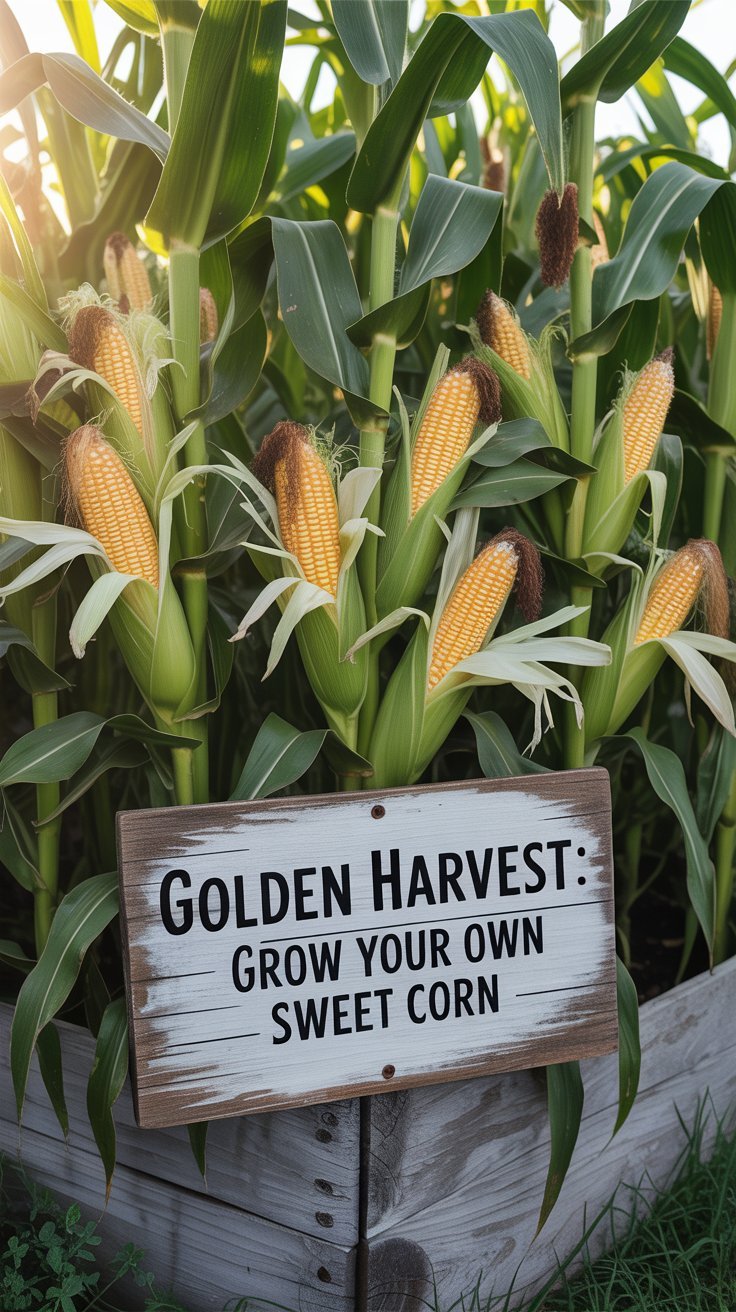
Sweet corn is a classic summer crop that requires ample space and sunlight. Its tall stalks and golden ears make it a standout in the garden.
Plant corn in blocks rather than single rows to ensure proper pollination. Use well-drained soil and provide consistent watering, especially during tasseling and ear development.
Harvest corn when the silks turn brown, and the kernels are plump and milky. Enjoy it fresh, grilled, or boiled for a taste of summer sweetness.
9. Green Beans
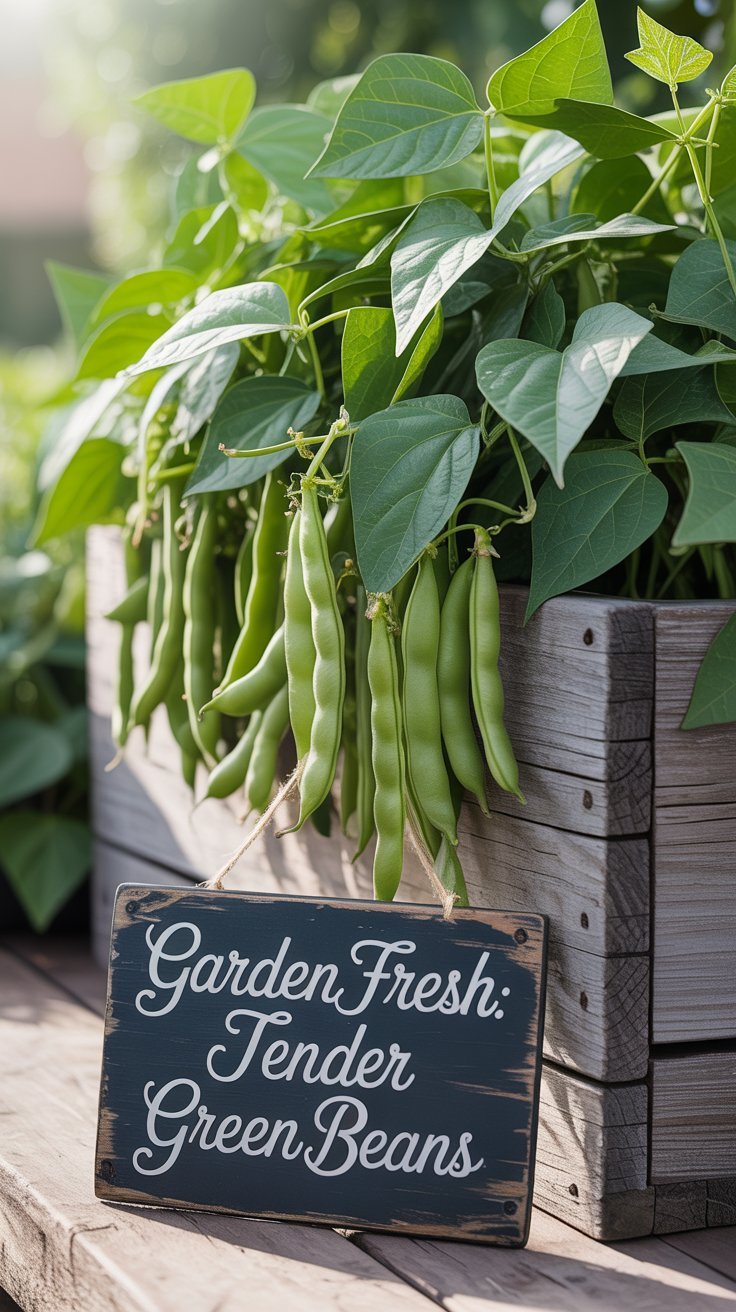
Green beans are a prolific and easy-to-grow crop, ideal for gardeners of all levels. They can be grown as bush or pole varieties, depending on your space and preference.
Sow bean seeds directly into the soil after the last frost, ensuring they receive full sun. Provide support for pole varieties and keep the soil consistently moist.
Harvest beans when they’re young and tender, typically 50-60 days after planting. Regular picking encourages continuous production throughout the summer.
10. Lettuce
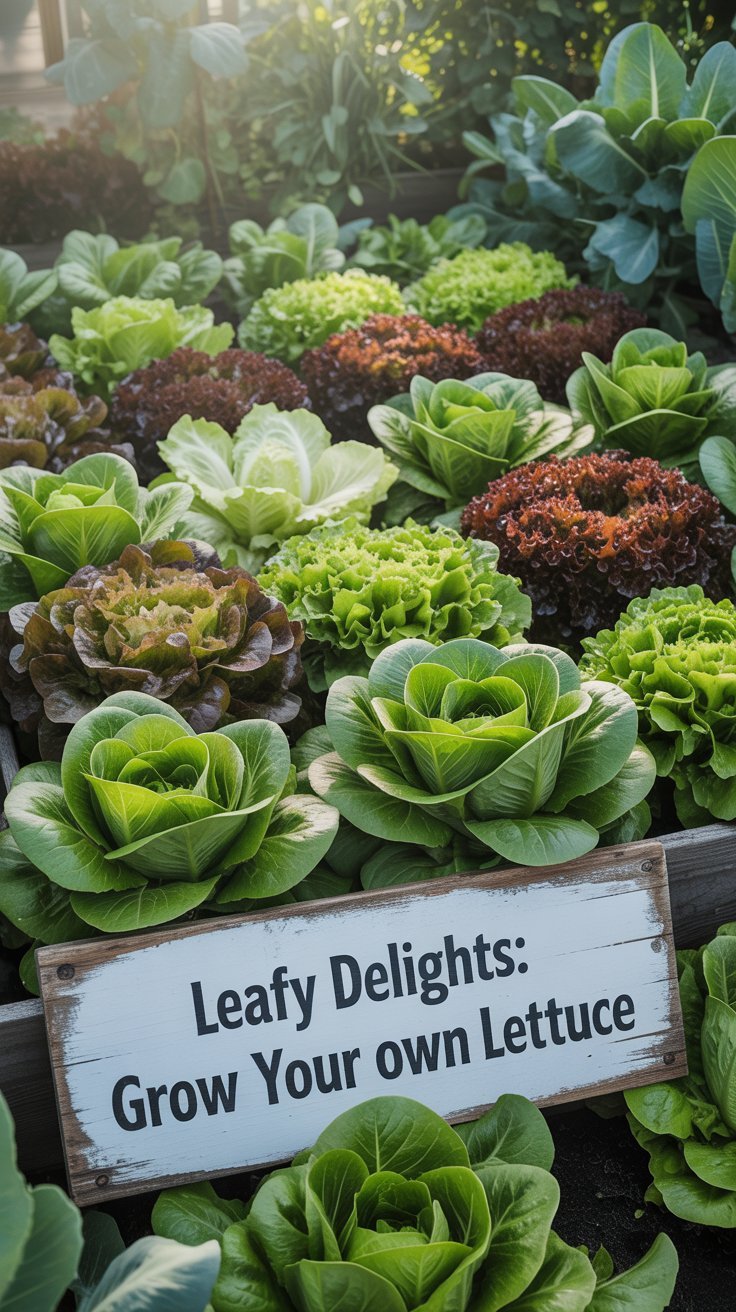
Lettuce is a cool-season crop, but certain heat-tolerant varieties can be grown in summer with proper care. It’s a staple for fresh salads and sandwiches.
Plant lettuce in partial shade to protect it from intense sun. Use well-drained soil and keep it consistently moist to prevent bolting. Mulching can help regulate soil temperature.
Harvest outer leaves as needed or cut the entire head when mature. Succession planting every few weeks ensures a continuous supply of fresh lettuce.
Tips for a Thriving Summer Garden:
- Sunlight: Ensure your garden receives at least 6-8 hours of direct sunlight daily.
- Soil: Use well-drained, fertile soil enriched with organic matter.
- Watering: Water consistently, keeping the soil moist but not waterlogged.
- Mulching: Apply mulch to retain moisture, regulate soil temperature, and suppress weeds.
- Pest Control: Monitor plants regularly for pests and diseases, and take appropriate action when needed.
